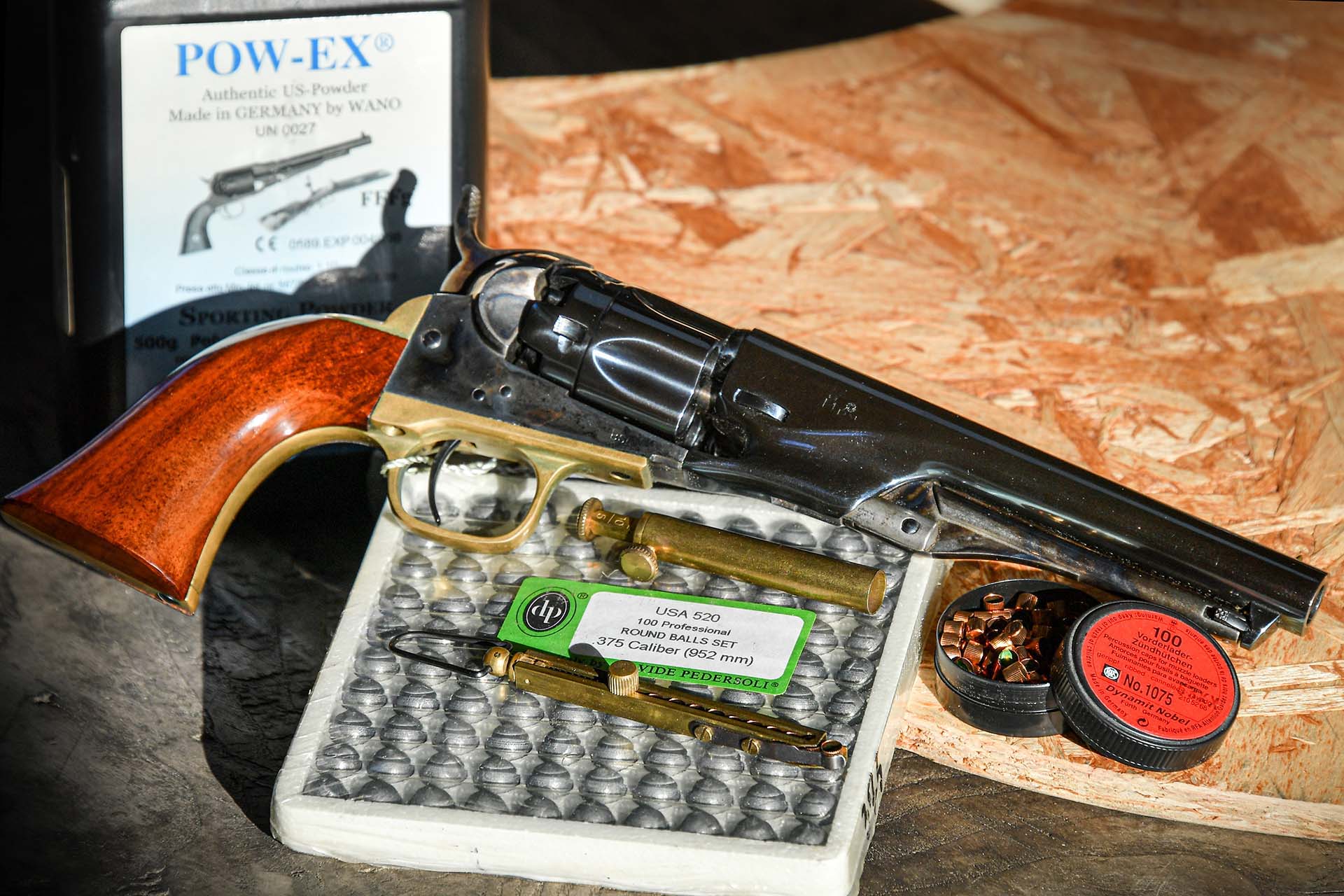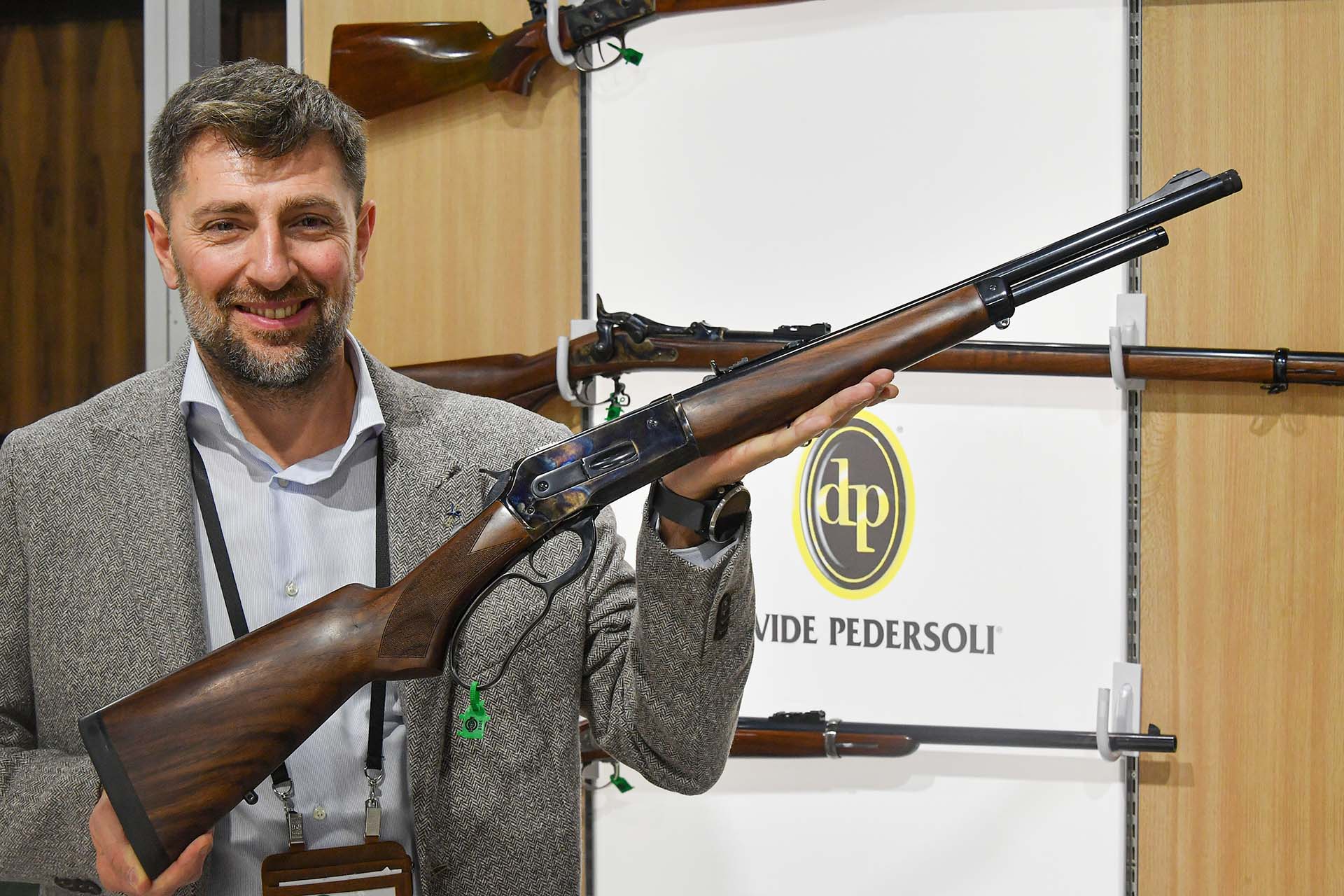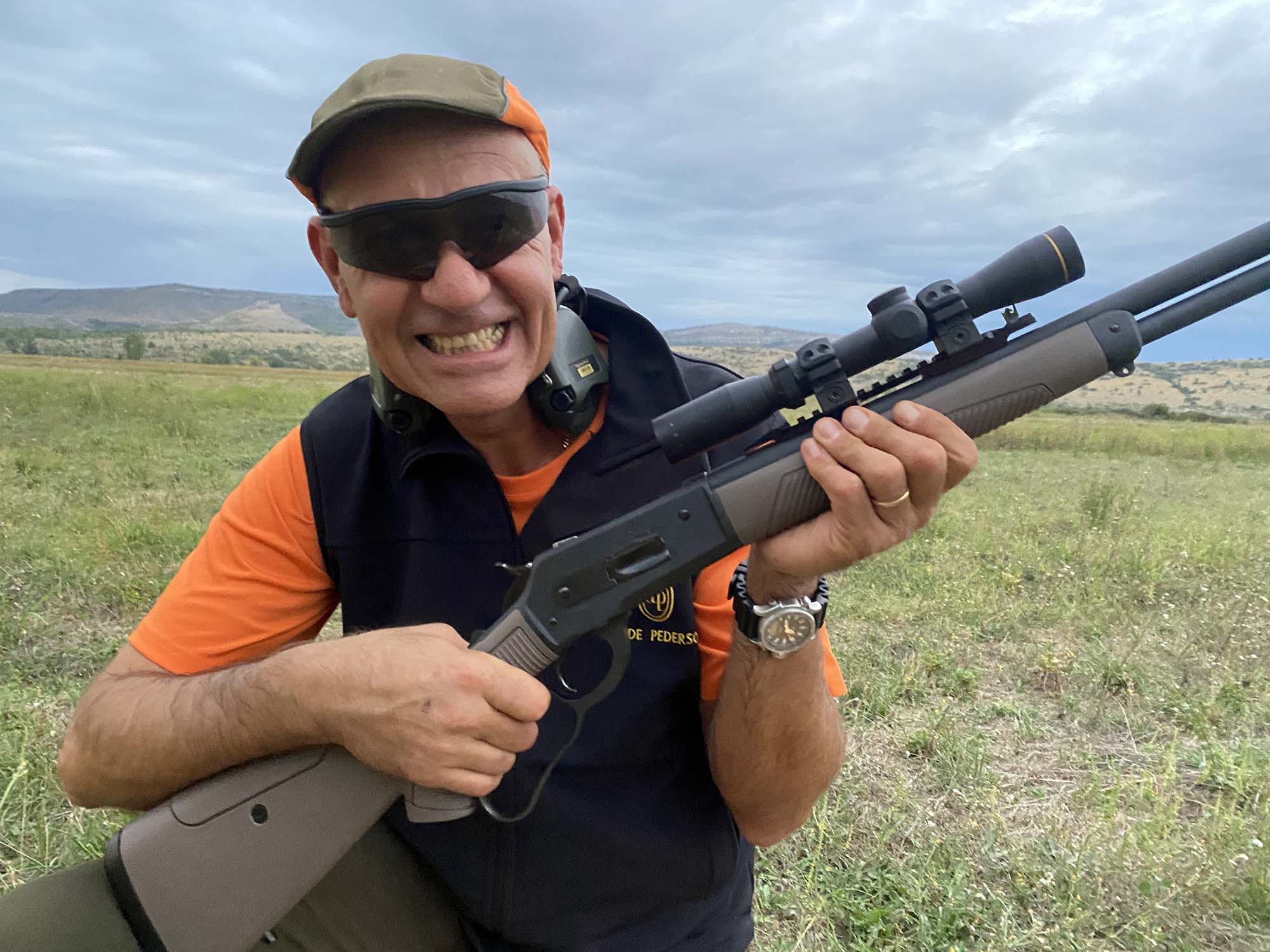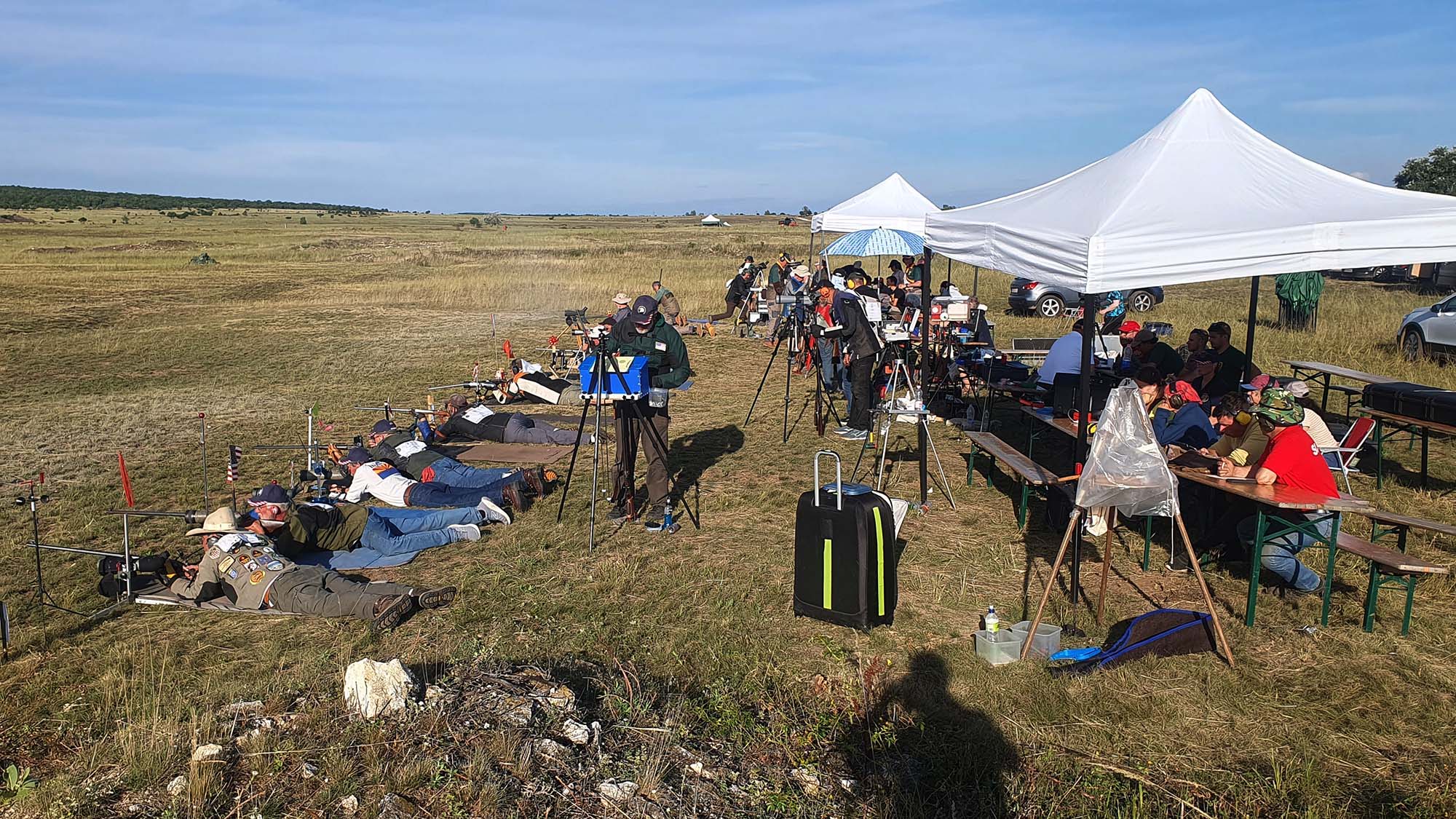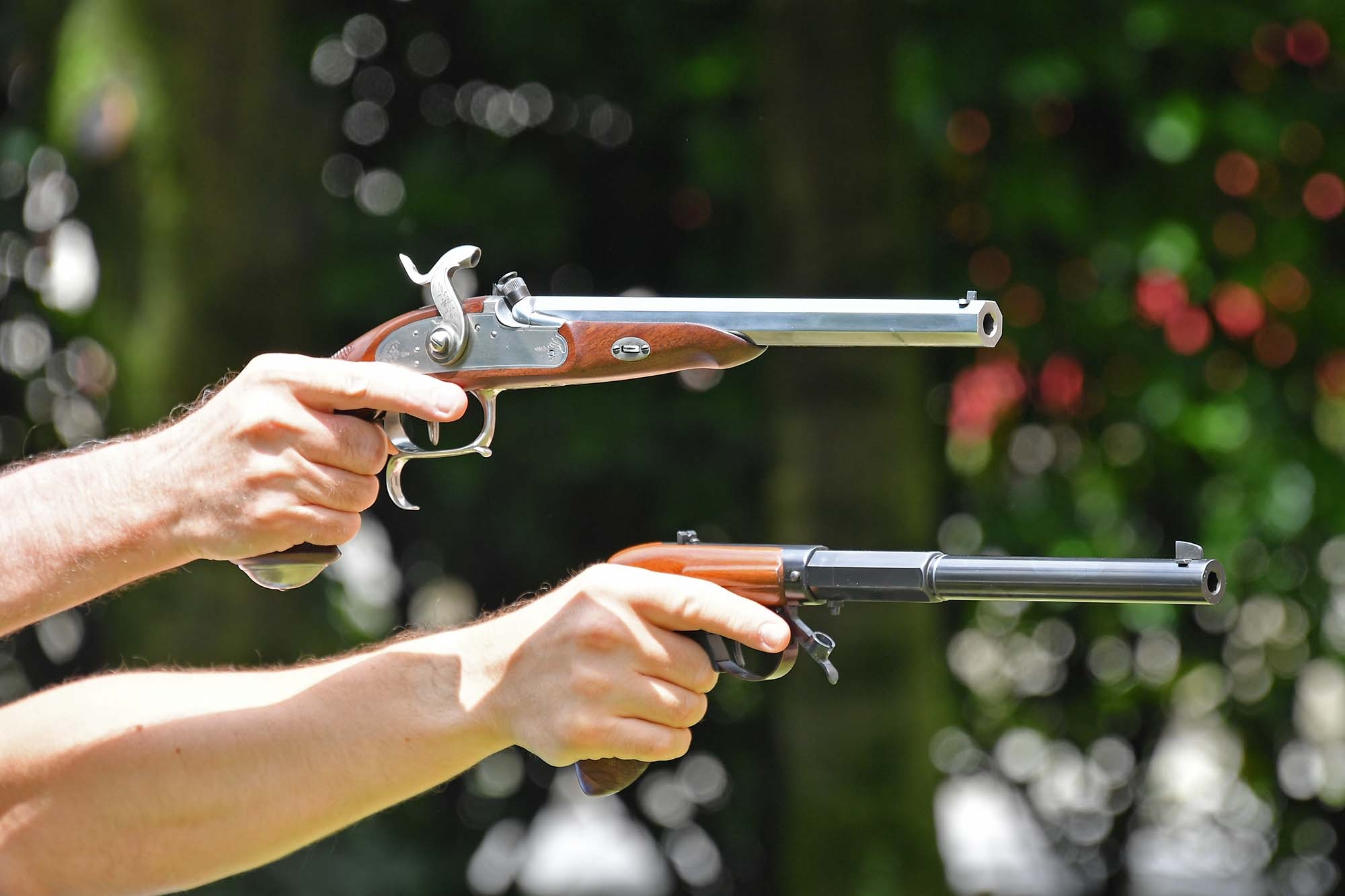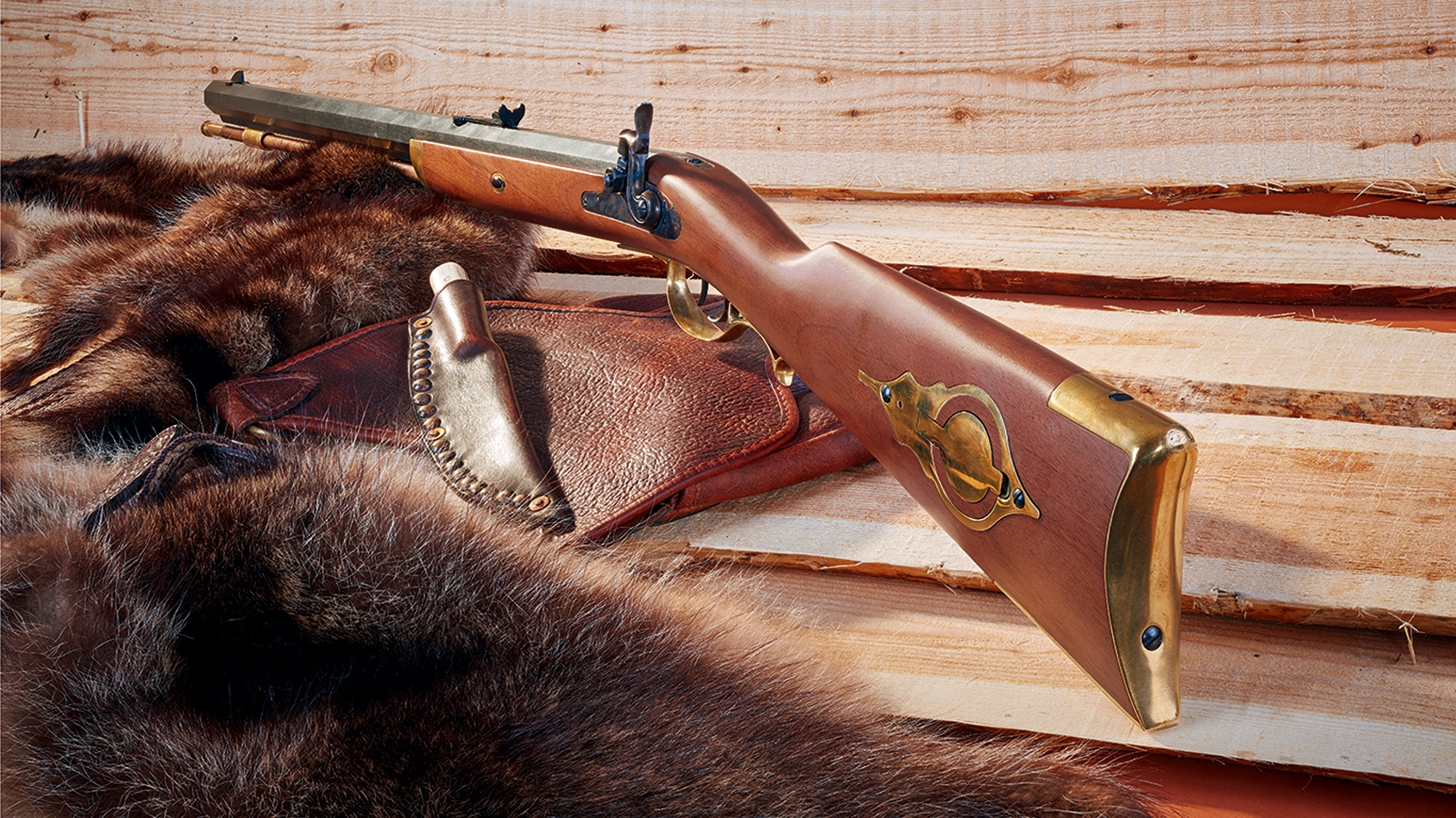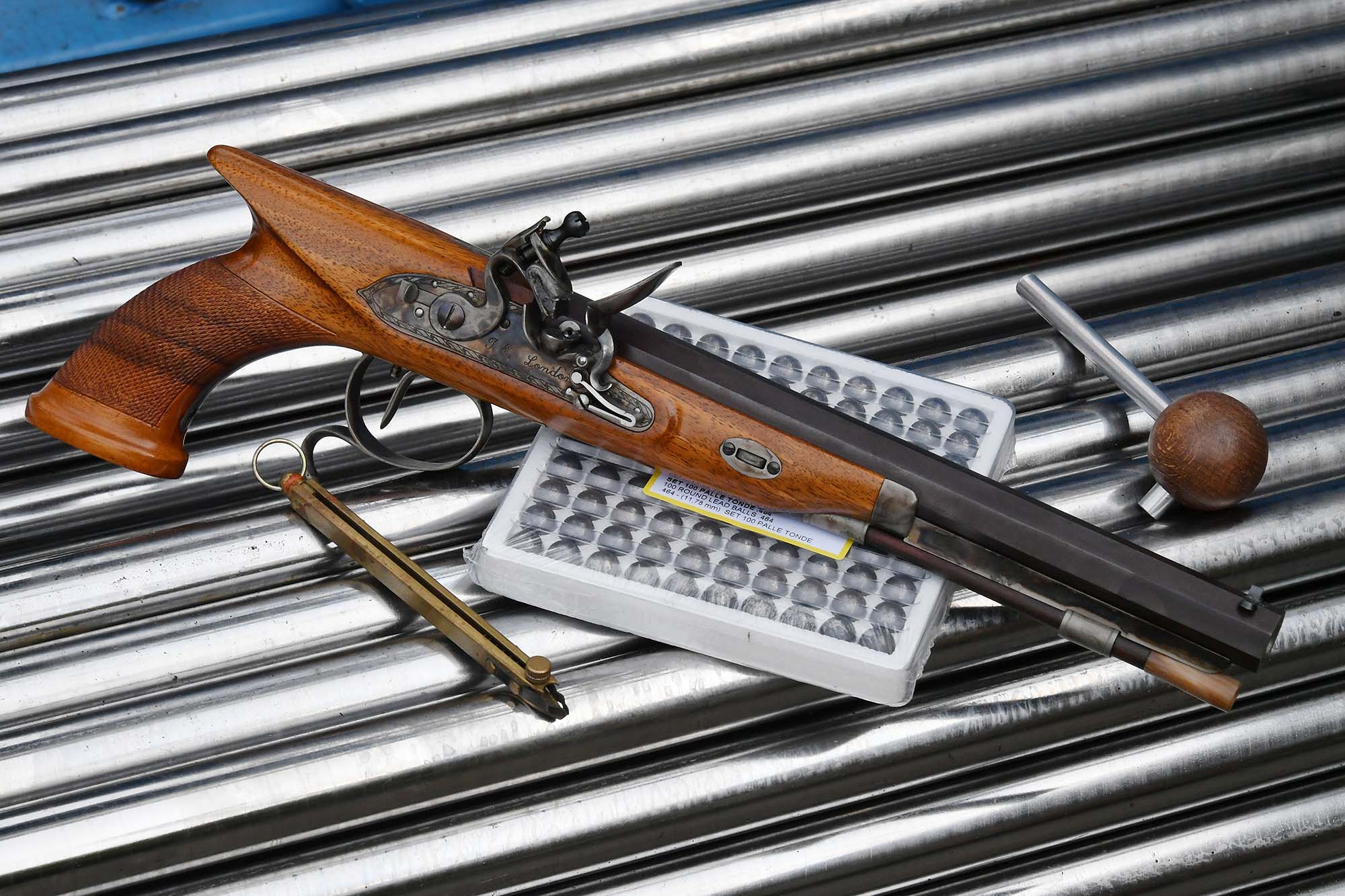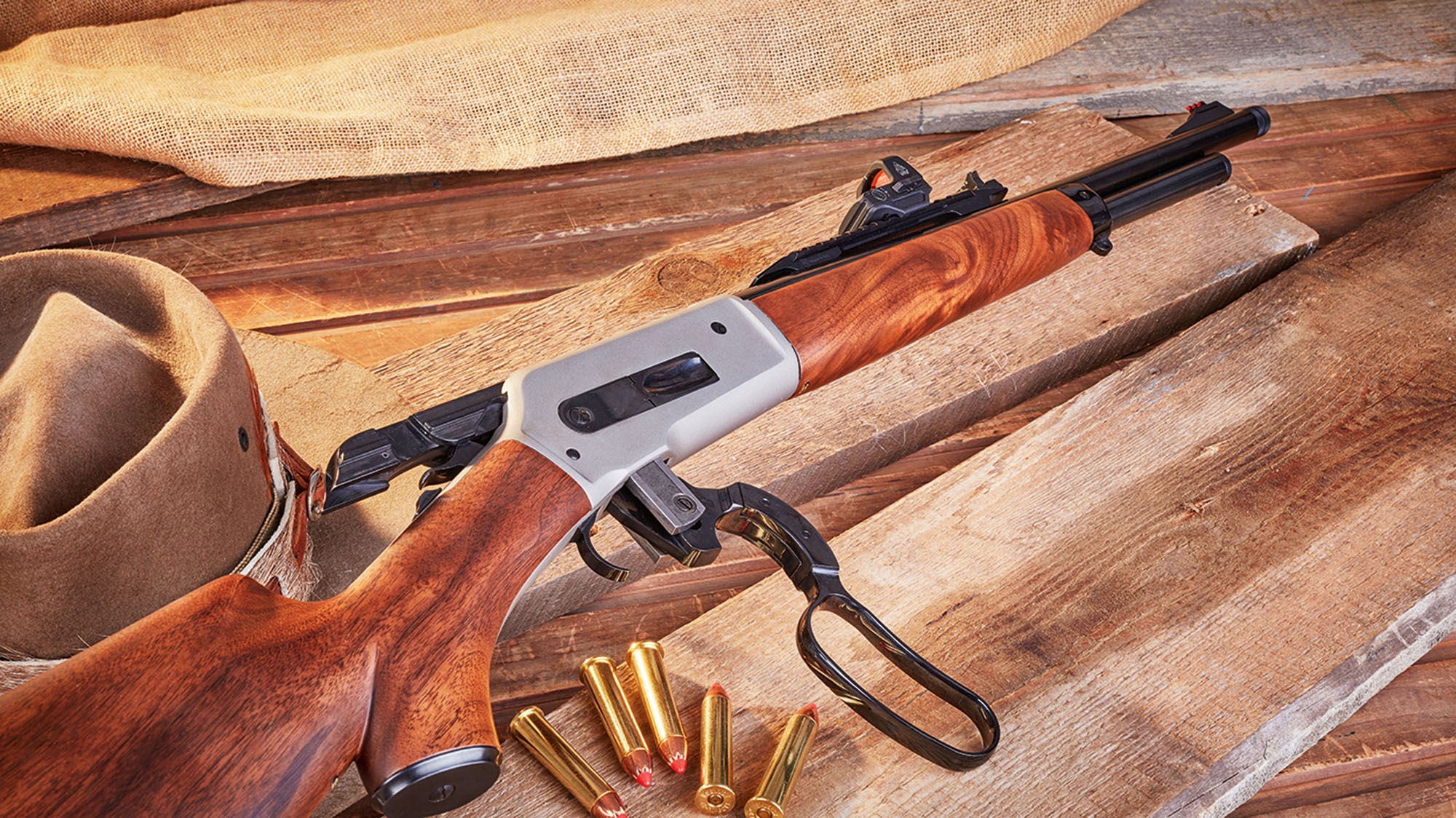So-called "neo-classic" muzzle-loaders – these are more than just simple copies of the guns of rangers and trappers, soldiers of the American Civil War or those of the British Commonwealth in the mid-19th century. This is proven by the Italian company Davide Pedersoli. A good 20 years ago, the family business began manufacturing limited and numbered commemorative models. This was done with with an eye on France during the Napoleonic era – the French Connection, so to speak. Each piece comes with a certificate of authenticity on parchment paper: Pedersoli's latest model bears the name Boutet – and with it comes a special story.
Pedersoli has (so far) produced three variants of his Boutet-influenced flintlock muzzle-loading pistol (prices are German RRPs):
- Boutet 1er Empire (1,319 euros)
- Boutet 1er Empire Commemorative (1,559 euros, like our test gun)
- Boutet 1er Empire Extra Deluxe (2,330 euros).
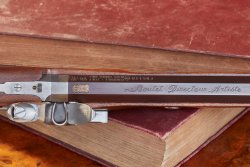
The only difference between these variants is the finish. The entry-level Boutet 1er Empire model has a color case hardened lock plate and a hemispherical brass butt plate. In the Commemorative and Extra Deluxe models (the latter with silver nails in the grip), the butt plate bears the relief of a woman's head amidst a nest of meandering reptiles. The motif refers to an ancient myth: the winged Medusa was one of the three terrifying creatures known as Gorgons, had snake hair and was finally beheaded by the Greek hero Perseus. There is a separate presentation box with a glass lid for each of these replicas.
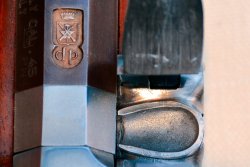
The elegant flintlock pistols each have a single set trigger. The Pedersoli's coat of arms or golden scroll and the inscription "Boutet Directeur Artiste" are emblazoned on the matte brown-blued barrel. The muzzle-length stock, like that of a Kentucky pistol, bends to form a sharply curved grip. A typical contour, Napoleon's travelling pistols had a similar design. The grip of the test gun is made of polished walnut with the aforementioned cap. At the bottom is a wooden ramrod with a horn tip and a brass thread at the other end. Above it sits the barrel held by two cross dowels, whereby these dowels are captive in the stock and can't be lost.
The barrel is brown-blued on the outside and polished to a high luster on the inside, with no tool marks visible. Its bore diameter is 11.9 mm – without rifling: it is smoothbore, as is often the case with travelling pistols. The barrel has the now common touch hole liner, which is at the correct height for quick firing. Above the (slightly recessed) muzzle is a front sight that can be drifted sideways thanks to a dovetail mount. The rear sight is fixed, as it is firmly screwed into the breech tang from below. The aesthetically perfect lock plate is labelled "Manuf RE/ a Versailles" in two lines. It has a low-friction design with link and fly, a wide and flat flash pan (the surface of which could do with a polish) and a roller bearing on the main spring. All good prerequisites for fast operation. The fit between lock and barrel is perfect, so no smoke residue gets inside when firing.
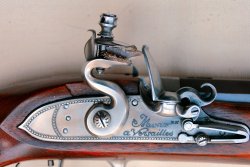
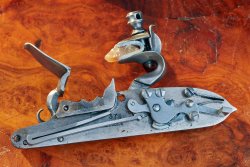
What struck us on first inspection was the slightly too hard frizzen spring. This could lead to faster lock wear and put a strain on the flint rubbing against it. The next sticking point: although the lock ignites very quickly, it does not do so on the first attempt every fourth or fifth shot. It also requires a very short flint, which must not be longer than 14 mm. A longer flint would block the complete closing of the frizzen when the hammer is in the uncocked position. Sawed flints in size zero (= 12x14 mm) just fit. The testers replaced the original lead lining with a leather one, as this made it much easier to tension the jaws. But these are only minor details.
The Pedersoli Boutet had to prove itself on the shooting range
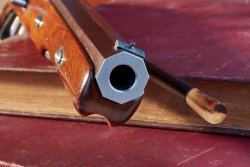
To hit something with a smoothbore firearm, proceed as follows: place the load in a funnel, place a greased felt disc on top of it, which has a slightly (!) larger diameter than that of such a large bullet that it can't be loaded even with brute force if there is a greased 0.24 mm thick patch underneath. This means that with smoothbore guns, everyone has to find the optimum pairing of the (greased) patch they use and a bullet that can be loaded so tightly. If the bullet is seated with a little more play, it is easier, but accuracy suffers.
Although the greased felt disc between the powder and the bullet is used for accuracy, it prevents velocity measurements as it sticks to the patch and flies through the measuring device after the bullet: a test series showed that this falsified the values. So the testers left the felt off when measuring. Pedersoli's single set trigger did not cause any problems in the test. When shooting, however, the grip should be as high as possible. If your gripis it too low, there is a risk of misfiring the shot downwards. The testers shot the gun sitting on the sandbag rest. The powder used was Swiss No. 2, with Swiss primer on the pan. Despite the relatively high weight of the pistol, the 40-grain load resulted in a significant recoil. In total, the test involved just over 60 shots, with the "consumption" of two stones.
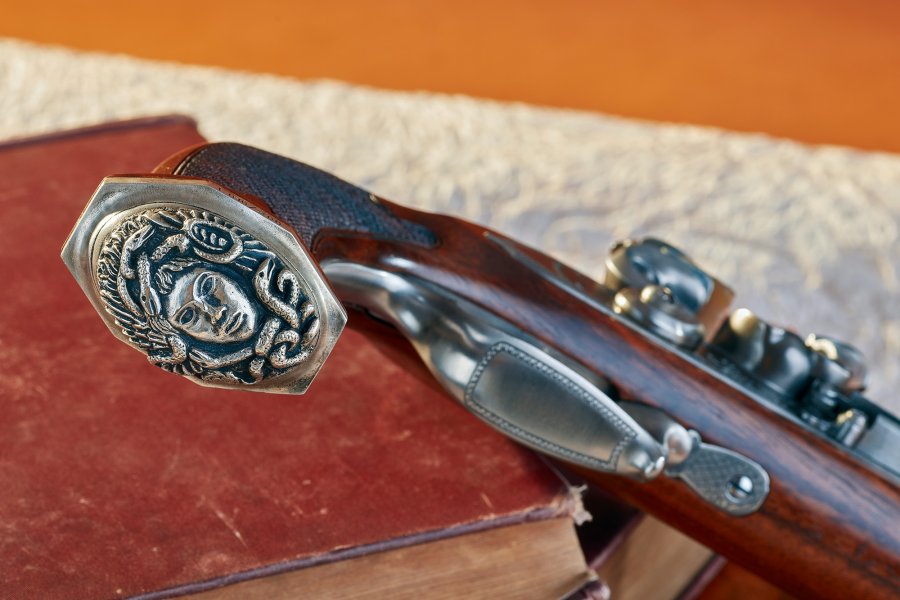
The Pedersoli Boutet is not necessarily suitable for sports use
The unusually steep grip shape was fashionable around 1800. At that time, today's shooting position with the elbow outstretched was not common, shooting was done with the arm bent. When shooting with one or both hands, today's sports shooters have to bear in mind the pistol's heavy front weight and strongly curved grip. Anyone who wants to could use it for sporting purposes, although it is hardly intended for this: in fact, it would hardly stand a chance against rifled guns due to its smooth barrel.
Pistol Pedersoli Boutet 1er Empire specs and price
Model | Pedersoli Boutet 1er Empire Commemorative |
Price (German RRP): | 1,559 euro |
Caliber: | .45 |
Capacity: | Single shot |
Dimensions (LxWxH): | 420x47x150 mm |
Barrel Length: | 269 mm |
Twist Rate: | No rifling, smooth bore |
Sight Radius: | 273 mm |
Rear Sight Notch: | 2.3 mm |
Front Sight Width: | 2 mm |
Trigger Pull Weight: | Adjustable, single set |
Weight: | 1,380 g |
Features: smoothbore flintlock muzzle-loading pistol, walnut grip with oil finish, chequering and steel butt cap. Brown-blued barrel, trigger guard, lock plate and hammer. Dovetailes bead front sight, fixed rear sight. Wooden ramrod with horn tip and threaded end. | |
Our test conclusion: the Pedersoli Boutet 1er Empire Commemorative would be priceless in true-to-original quality
Of course, a serially made neo-classic can only approximate what left Boutet's workshop a good 200 years ago. If one wanted to reproduce even half of its quality, then this would require one hundred per cent production by hand and a price that would exceed the range of 1,319 (standard model) to 2,330 euros (Deluxe model) many times over: Boutet's products were considered the epitome of luxurious firearms. His pieces sometimes featured gold inlays on sky-blue metal as well as on the finest woods. It is obvious that the lavish use of such noble materials in combination with high-end finishes and the finest craftsmanship had a price-driving effect. The Pedersoli team has built on this by copying the contours of the original and presenting a pistol that looks very good with its oil-finished, polished dark walnut stock and brown-blued barrel. It is also decently finished and hits reasonably well within the limits of what a "naughty", smoothbore handgun barrel can achieve: It is rather something for collectors of such limited models – and for reenactors of the Napoleonic era who want to add a special detail to their appearance.
For more information on the Boudet 1er Empire flintlock pistols please visit the Davide Pedersoli website.



